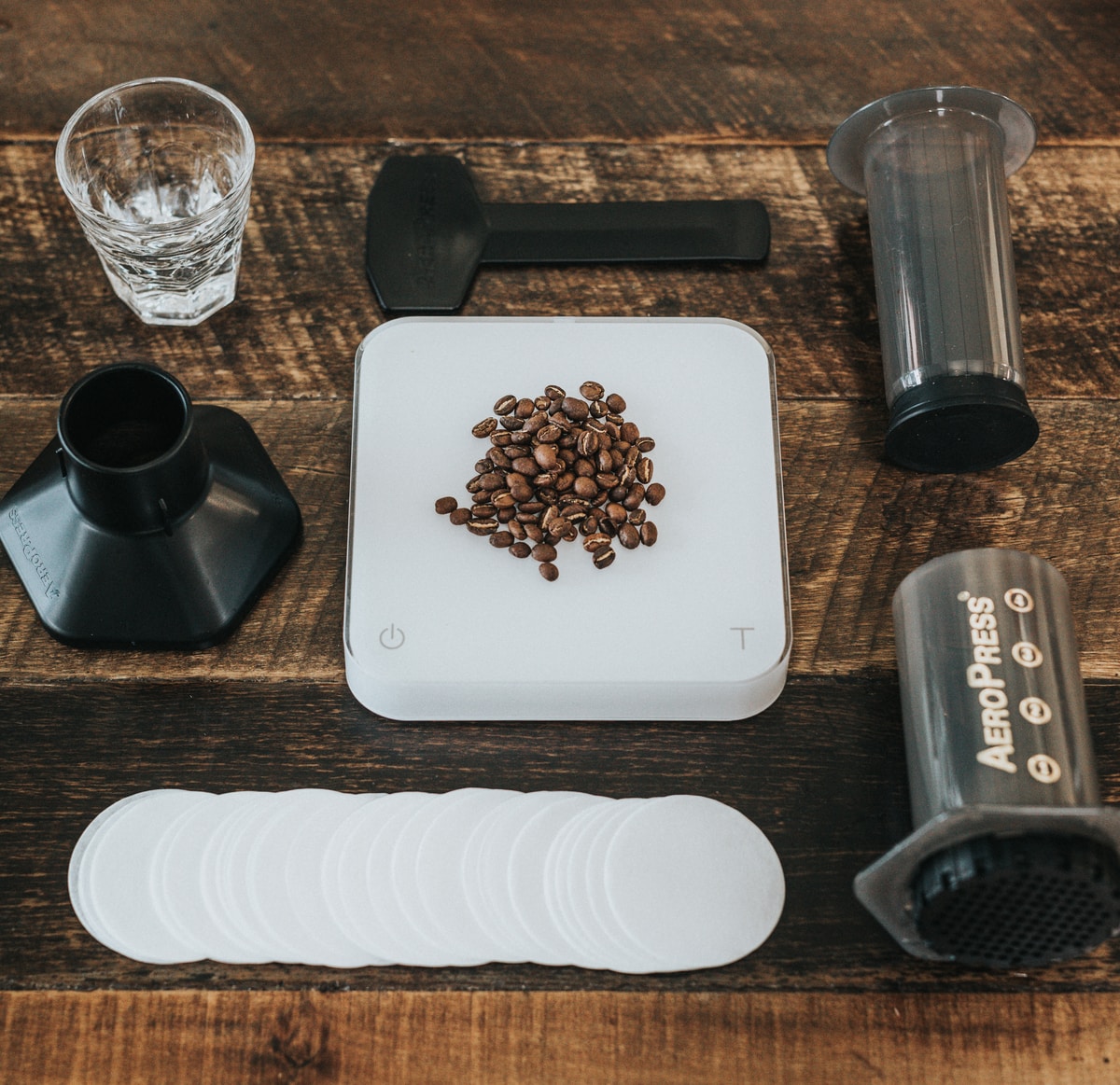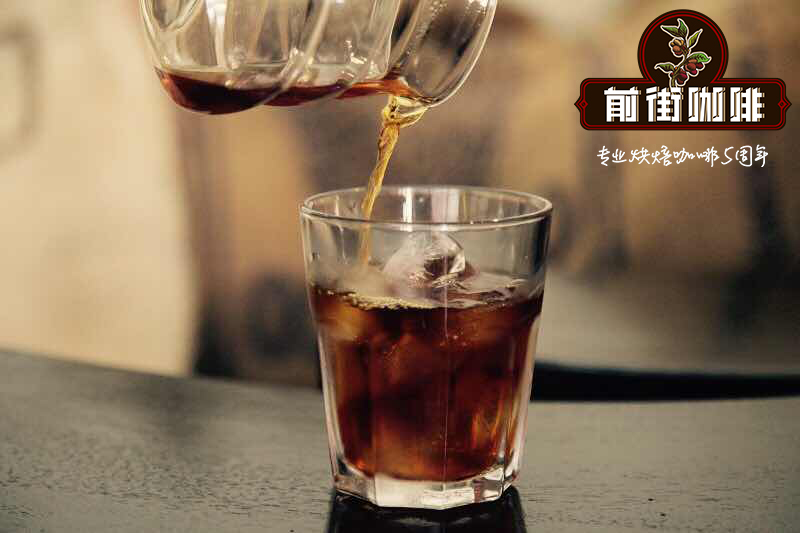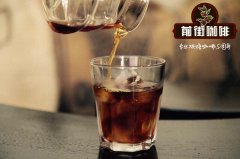Use Philharmonic pressure for two minutes to complete cold extracted coffee how to use Philharmonic pressure to make cold brewed coffee
Philadelphia is one of the representative utensils of fine coffee, which is not only widely used but also easy to use, it is not easy to use it to make a bad cup of coffee, and it is also easy to experiment and create its own brewing formula.
However, so far, it is mainly used in hot coffee. All this changed when Philharmonic pressure announced its cold extract Philharmonic coffee recipe, and surprisingly, it took only two minutes to brew.

It only takes two minutes to make a cold extract with the Philharmonic pressure.
Without looking at the brewing utensils, the recipe for most cold-brewed coffee will take 12 hours, 24 hours or more. In general, the brewing of coffee needs heat, because heat will accelerate the chemical reaction and increase the flavor and aromatic substances extracted from coffee powder through brewing. Therefore, in order to make up for the lack of cold coffee temperature, it is often necessary to lengthen the brewing time.
It is worth mentioning that cold coffee is often popular because of its sweetness and mild taste because some chemicals are not extracted at low temperatures. However, with longer brewing time or other ways to accelerate extraction, delicious and refreshing cold brewed coffee can be made.
Therefore, the cold soaking of the Philharmonic for a short time is unique. Brewing from the standard length of time, it is surprising that the taste is satisfactory, although the taste is slightly weaker than the hot extraction, but few people can notice such a small difference. A simple way to make up for this slight difference is to use more than 10% more coffee powder. The standard is one spoonful or about 16 grams of coffee beans. So cold soaked coffee beans can be used to about 17.5 grams.
But it is recommended to increase the mixing time instead of using more coffee powder. We tried the standard 10 seconds, 30 seconds, 1 minute, 2 minutes and 3 minutes. After the experiment, we thought that 1 minute was enough. There is little difference in stirring after more than a minute.
In other words, strong stirring will increase the extraction efficiency, which in turn shortens the extraction time, which is suitable for you who are very hot but immediately want a cold drink. Let's take a closer look at how to do this.
How to use Philharmonic pressure to make cold bubbles
Philharmonic pressure is known for its simple operation, which does not require concentric water injection or multi-stage water injection, just simply add coffee and water, stir and press down. Using the Philharmonic press as a cold extract is similar, but you still have a lot of room to discover the most suitable formula for your brewing.
1. Get ready for Philharmonic pressure.
Whether you prefer reverse cooking or positive pressure cooking to use Philharmonic pressure, making cold bubbles needs to make sure that the Philharmonic pressure is clean and dry.
Then put the filter paper in the powder trough, you can first soak the filter paper with hot water to help the filter stick to the filter and remove the smell of the paper. Some people will also experiment with double-layer filter paper or metal filter, which allows coffee oil to pass through, thus creating a thicker taste and more environmentally friendly. Filter paper, on the other hand, creates a drier and lighter taste because it absorbs the grease of coffee.
two。 Prepare the coffee and add it to the brewing table
The charm of Philharmonic pressure lies in its versatility, you can use it to make many kinds of coffee, and use different grinding thickness, soaking time, powder / water ratio to experiment the formula, Philharmonic pressure is suitable for any form of coffee, of which the most popular is medium-roasted coffee, but you can also decide which coffee to use according to your preference.
Although the Philharmonic pressure is so flexible, there are still some guidelines for reference. Cold-brewed coffee is suitable for fine grinding, while if it is generally brewed in hot water, if the grinding details will accelerate the flavor and aroma, it is recommended to use a thicker grinding process to adapt to longer soaking.
Although you use hot water to cook, be careful not to grind too much. If you use the rule of positive pressure, it will let too much water flow through the coffee powder before pressing. If the amount of water flowing down before stirring is more than 3 mm, you may need to grind a little bit or add a little more coffee. A large amount of dripping before downloading will reduce the extraction rate, and some people allow even less water to flow down.
The amount of powder is another variable you should consider. The standard is to use 16 grams of coffee powder, and if you want to experiment, you can start with this amount and then slowly adjust until you find your favorite recipe, even if you don't expect them to work, you should try it. This is the way to discover new things.
3. water
According to the official formula provided by Philharmonic pressure, standard Philharmonic pressure coffee is brewed in 80 degrees hot water and the coffee powder needs to be stirred for about 10 seconds before pressing down.
When making cold bubbles, add normal temperature water to the Philharmonic pressure No. 2 sign (about 130g water). Some people tend to use filtered water because the small minerals in these water will affect the speed of extraction.
This water creates the concentration of coffee and becomes an important base for cold-brewed coffee. Make a high concentration of coffee and then add water to create a smooth taste, and then press down all the remaining water.
Remember to add water and stir for a minute. Don't be lazy and omit this step, or your coffee will taste weak.
4. Lower pressure
Light pressure actually makes it easier for you to press, because if you press hard, it will hinder the coffee particles and make you work harder. If you think the resistance is too strong for you to press down, you can pause for ten seconds before pressing.
Once you have finished pressing down, you can push the coffee powder away from the Philharmonic pressure and clean the utensils.
5. Add more water
Now that you have a cup of coffee with a high concentration, you can add some cold or ice water to make the total capacity reach 240ml. If there is no ice water or ice cubes, the effect of using room temperature water will be very good, and filtered boiled water must also be used here.
In hot weather, there are few refreshing drinks like cold coffee. Using this Philharmonic pressure formula, you can skip 24 hours of brewing time, which may take less time than hot coffee. Just make sure you use finely ground coffee and remember to stir the coffee well before pressing it down.

Important Notice :
前街咖啡 FrontStreet Coffee has moved to new addredd:
FrontStreet Coffee Address: 315,Donghua East Road,GuangZhou
Tel:020 38364473
- Prev

The method of making coffee with Philharmonic pressure introduces the advantages and disadvantages of Philharmonic pressure and d special pressure.
This brewing apparatus is not a flash in the pan, its appearance is not like ordinary brewing equipment, and the company that invented this brewing apparatus is not famous for producing coffee equipment, but the Frisbee they produce. However, now Ailo pressure is a favorite cooking apparatus for many people in the world, and there is even Ailo pressure.
- Next
The Development History of Coffee Bean Dryer: pan, Roller, Commercial Bean Dryer, Hot Air Bean Dryer
Coffee has a long history in the pan roasting era. The first people who roasted coffee beans into drinks can be traced back to Central Africa and the Middle East hundreds of years ago, and then the Ottoman Turkish Empire and European colonists brought coffee to the world. The earliest bean roasting tools were thin, perforated pots that roasted directly over high fire, and coffee bakers used spoons to turn the beans and make sure they were roasted.
Related
- Beginners will see the "Coffee pull flower" guide!
- What is the difference between ice blog purified milk and ordinary milk coffee?
- Why is the Philippines the largest producer of crops in Liberia?
- For coffee extraction, should the fine powder be retained?
- How does extracted espresso fill pressed powder? How much strength does it take to press the powder?
- How to make jasmine cold extract coffee? Is the jasmine + latte good?
- Will this little toy really make the coffee taste better? How does Lily Drip affect coffee extraction?
- Will the action of slapping the filter cup also affect coffee extraction?
- What's the difference between powder-to-water ratio and powder-to-liquid ratio?
- What is the Ethiopian local species? What does it have to do with Heirloom native species?

